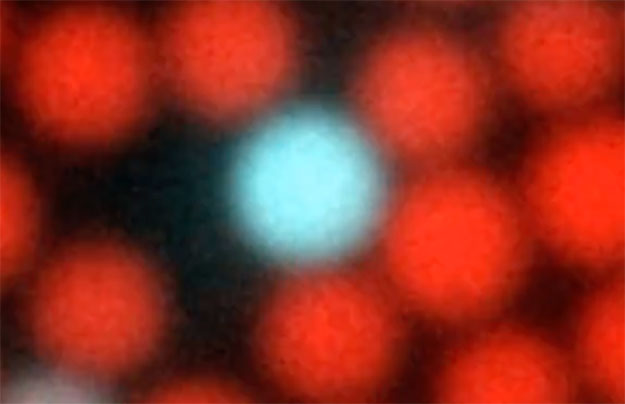Physicists Discover How Particles Self-assemble

A team of physicists has discovered how DNA molecules self-organize into adhesive patches between particles in response to assembly instructions. Its findings offer a “proof of concept” for an innovative way to produce materials with a well-defined connectivity between the particles.
The work is reported in Proceedings of the National Academy of Sciences.
“We show that one can program particles to make tailored structures with customized properties,” explains Jasna Brujic, a professor in New York University’s Department of Physics and one of the researchers. “While cranes, drills, and hammers must be controlled by humans in constructing buildings, this work reveals how one can use physics to make smart materials that ‘know’ how to assemble themselves.”
Scientists have long sought a means for molecules to self-assemble and have achieved breakthroughs on many fronts. However, less developed are measures in which these tiny particles self-assemble with a preprogrammed number of bonds.
To address this, Brujic and her colleagues, Angus McMullen, a postdoctoral researcher in NYU’s Department of Physics, and Sascha Hilgenfeldt, a professor of mechanical science and engineering at the University of Illinois, Urbana-Champaign, ran a series of experiments to capture–and manipulate–the behavior of DNA molecules on particle surfaces.
Operating at a micron level–with particles 1/25th the size of a speck of dust–they submerged tiny droplets into a liquid solution. Attached to these droplets were “DNA linkers”–molecular tools possessing “sticky ends” that allow for mixing and matching to form an array of structures desired by the researchers.
“The beauty of this procedure is we can program the properties of a specific material, such that it could be elastic or brittle, or even have self-healing powers once broken, since the bonds can be made and broken reversibly,” observes Brujic. “Creators could decide to put in five particles that stick to only one other one, 10 that stick to two, and 20 that stick to three, or any other combination. This would allow you to build materials with specific topologies or architectures.”
Astrobiology








